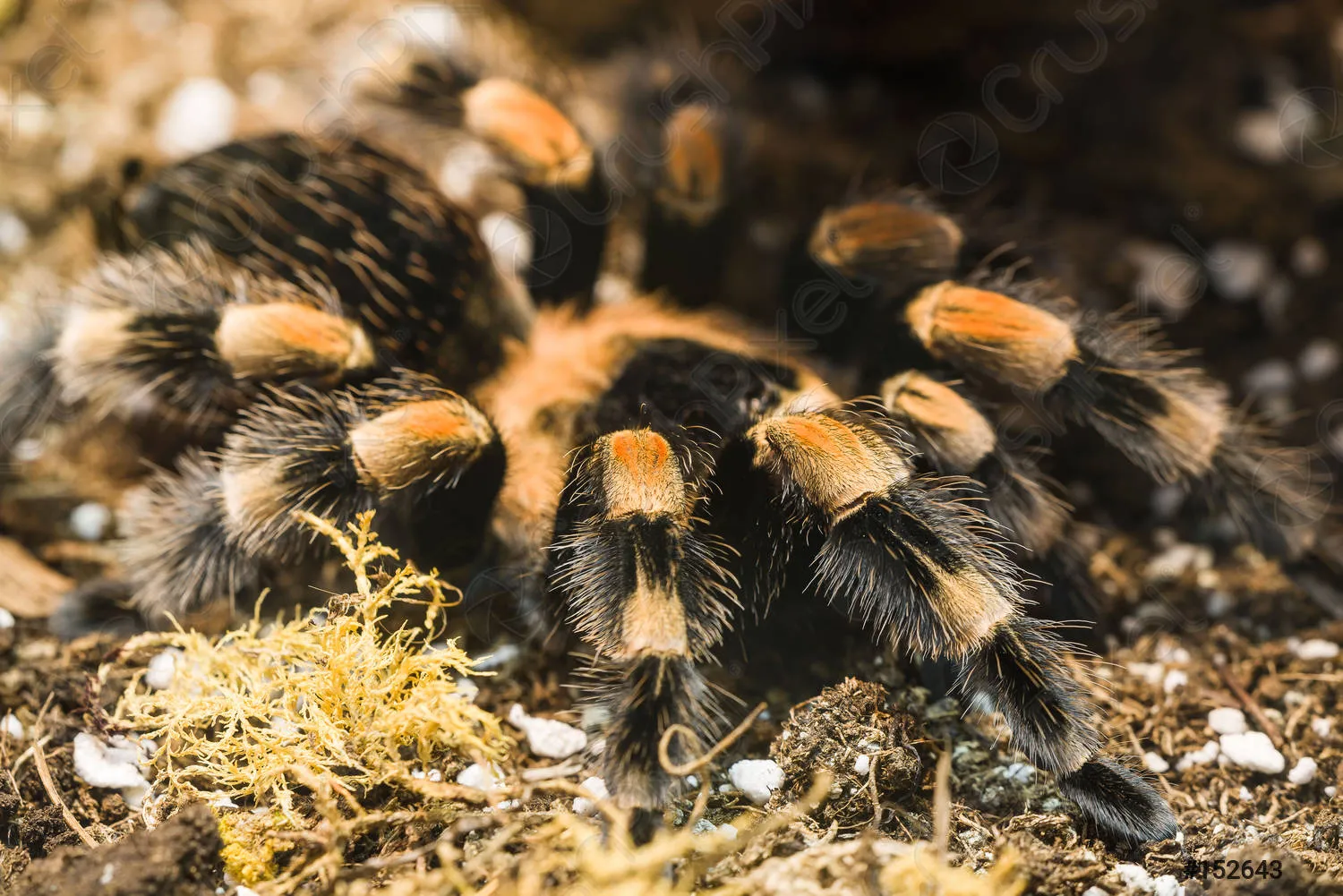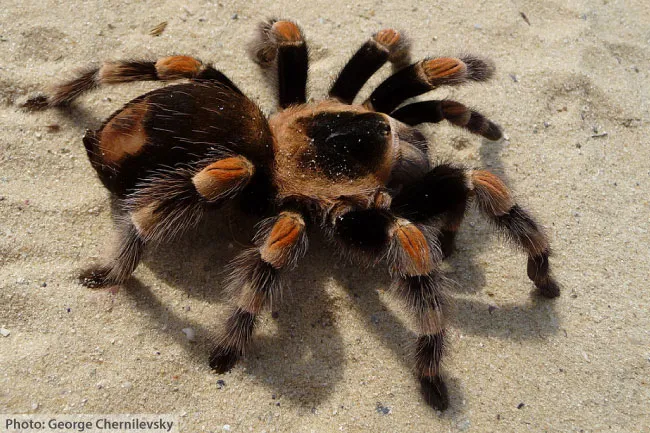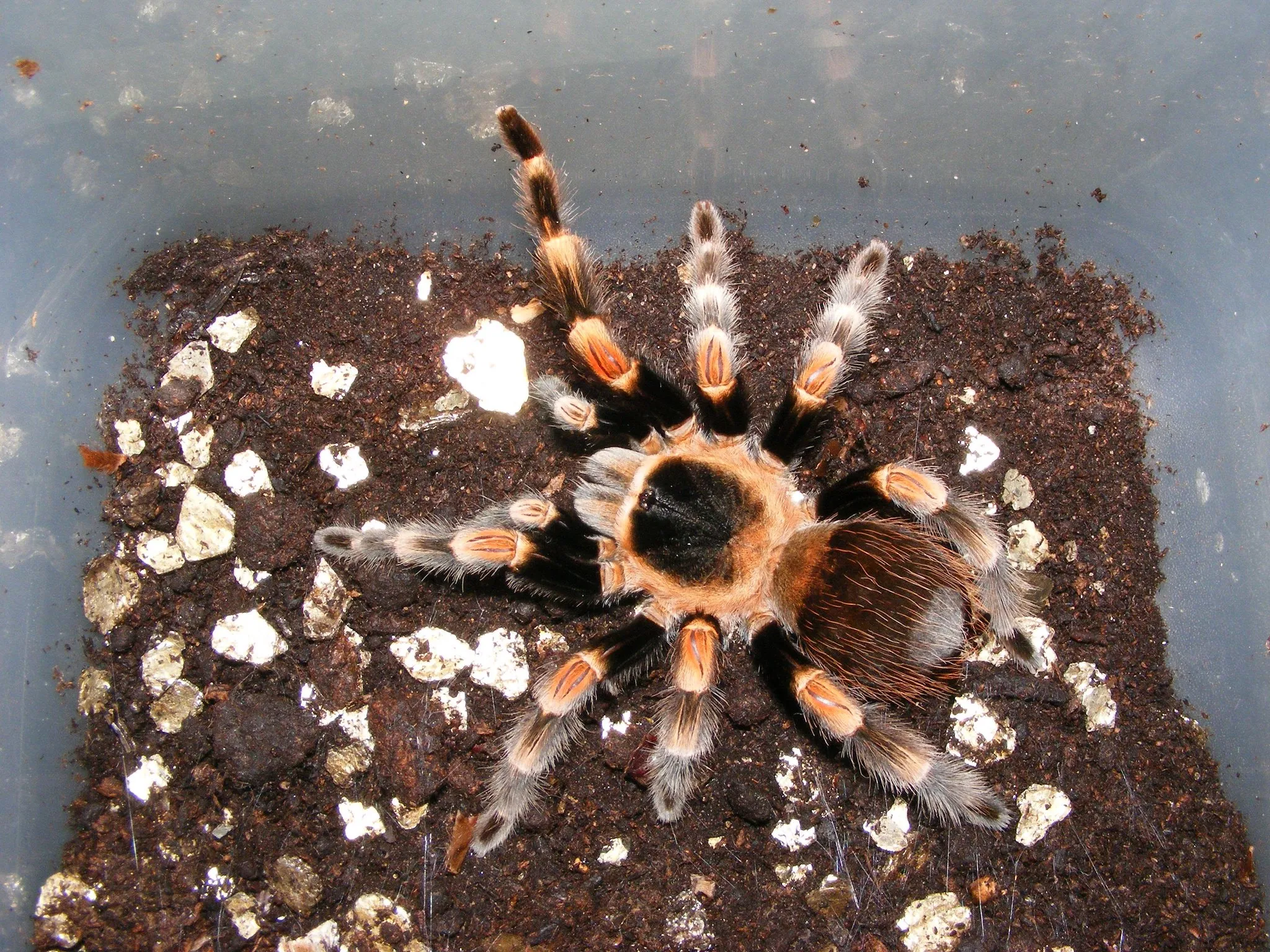Mexican Redknee Tarantula Poisonous Overview
The Mexican Redknee Tarantula (Brachypelma hamorii), a popular pet among arachnid enthusiasts, often sparks curiosity about its potential danger. While these captivating creatures possess venom, the term “poisonous” can be misleading. This article delves into the intricacies of whether the Mexican Redknee Tarantula is poisonous, exploring its venom, bite effects, and safety considerations. Understanding the facts is crucial for responsible pet ownership and appreciating these fascinating spiders. We will cover the defensive mechanisms, venom potency and the severity of the reaction. This is an exploration of the realities of owning a Mexican Redknee Tarantula, separating fact from fiction.
Is the Mexican Redknee Tarantula Poisonous?
Technically, the Mexican Redknee Tarantula is venomous, not poisonous. This distinction is important. Poisonous animals release toxins upon being touched or ingested, while venomous animals inject toxins via a bite or sting. Redknee tarantulas possess venom, which they use to subdue prey. The venom is injected through their fangs during a bite. The term ‘poisonous’ is often incorrectly used, but it’s essential to remember that a tarantula’s threat comes from its venom delivery method, not from any poisonous substance on its body surface. Many people wonder if they are poisonous, and the answer is no, but they are venomous and can deliver a painful bite.
The Venom Composition of Mexican Redknee Tarantulas

The venom of the Mexican Redknee Tarantula is a complex cocktail of enzymes, peptides, and other compounds. These substances primarily serve to immobilize and pre-digest the tarantula’s prey, such as insects and small invertebrates. The venom works by affecting the nervous system and muscles of the prey, causing paralysis. Although designed for insects, the venom can also affect humans. The precise composition of the venom can vary slightly depending on the tarantula’s age, diet, and environment, but it generally consists of a mix of neurotoxins, proteases, and other bioactive compounds. This intricate blend is what makes a tarantula’s bite effective for hunting but also potentially irritating to humans.
Top 5 Facts About the Mexican Redknee Tarantula
Fact 1 Defensive Mechanism
Mexican Redknee Tarantulas primarily rely on urticating hairs as a defense mechanism. These hairs, located on their abdomen, are barbed and can be flicked towards perceived threats. When the hairs make contact with skin or eyes, they cause intense itching and irritation. While not a form of venom, this defense is very effective at deterring predators. The tarantulas will rub their hind legs against their abdomen, releasing a cloud of these irritating hairs. This behavior is more common than biting. The hairs can be a nuisance for humans and are a significant part of the tarantula’s defense strategy.
Fact 2 Venom Potency

The venom of the Mexican Redknee Tarantula is considered to be of relatively low potency to humans. This means that while a bite can be painful, it is not usually life-threatening. The venom is more effective on insects, as it is designed to quickly paralyze them. The effects on humans are often compared to a bee sting, with localized pain, swelling, and redness. Serious reactions are rare, but allergic reactions can occur. The potency is significantly less compared to many other venomous creatures, making the risk of a serious reaction relatively low. The reaction to the bite is dependent on the person, some people are more sensitive than others.
Fact 3 Effects of a Bite
If bitten by a Mexican Redknee Tarantula, the immediate effects typically include localized pain, swelling, and redness at the bite site. Some people may experience muscle cramps or spasms. In rare cases, symptoms such as nausea, headache, and increased heart rate can occur. The severity of these effects varies depending on the amount of venom injected and the individual’s sensitivity. Most symptoms subside within a few hours to a day. It’s important to keep the bite area clean and monitor for signs of infection, although this is not very common. The bite can be uncomfortable, but it is seldom dangerous.
Fact 4 Severity of Reaction
Serious reactions to a Mexican Redknee Tarantula bite are extremely uncommon. Allergic reactions, however, can occur, leading to more severe symptoms such as difficulty breathing, hives, and swelling of the face or throat. If these symptoms appear, immediate medical attention is necessary. For most people, the primary concern is local irritation and discomfort. The bite itself is rarely life-threatening. Most bites are mild and resolve without medical intervention, emphasizing the low risk associated with these tarantulas. However, anyone who is bitten should observe the area and be aware of any possible systemic reactions.
Fact 5 First Aid and Treatment

In the event of a Mexican Redknee Tarantula bite, the first step is to remain calm. Clean the bite area thoroughly with soap and water to prevent infection. Apply a cold compress to the area to reduce swelling and pain. Over-the-counter pain relievers, like ibuprofen or acetaminophen, can help manage discomfort. If symptoms worsen or if you suspect an allergic reaction, seek immediate medical attention. Antihistamines may be prescribed for allergic reactions. While medical treatment is rarely required, it’s always prudent to seek professional medical advice if you are concerned about your health. The most important thing is to monitor the reaction and seek medical care if symptoms escalate.
Comparing Mexican Redknee Tarantula Venom to Others
Other Tarantula Venom Comparison
Compared to other tarantula species, the venom of the Mexican Redknee Tarantula is considered relatively mild. Some tarantulas, such as certain species from Asia and South America, may have more potent venom, though serious envenomations are still rare. The venom of the Mexican Redknee Tarantula is primarily designed for small prey. Their venom is not designed to incapacitate larger creatures, so its effect on humans is generally less severe. Understanding the differences in venom potency across tarantula species is crucial for responsible pet ownership and handling. The comparison can vary between species, but the Mexican Redknee Tarantula is one of the safer options.
Human Reaction to Tarantula Venom

Allergic Reactions and Risks
While most people experience only mild reactions to a Mexican Redknee Tarantula bite, allergic reactions can occur. These reactions can range from localized hives and itching to more severe symptoms such as difficulty breathing, swelling of the throat, and anaphylaxis. If any signs of a serious allergic reaction appear, immediate medical attention is crucial. People with a history of allergies should be particularly cautious when handling tarantulas. Educating oneself about the potential risks and knowing how to recognize and respond to an allergic reaction is essential for those who own or interact with these spiders. Always prioritize safety and seek medical help when needed.
Conclusion
In conclusion, while the Mexican Redknee Tarantula is venomous, it is not poisonous. The venom, though present, is considered to be of low potency to humans, with bites typically resulting in localized pain and swelling. Serious reactions are rare, but allergic reactions are possible. Understanding the nature of tarantula venom, practicing safe handling, and knowing how to respond to a bite are essential for both owners and those who encounter these spiders. By separating fact from fiction and understanding the actual risks, we can appreciate the Mexican Redknee Tarantula without unnecessary fear, ensuring both the safety of humans and the well-being of these amazing creatures.
